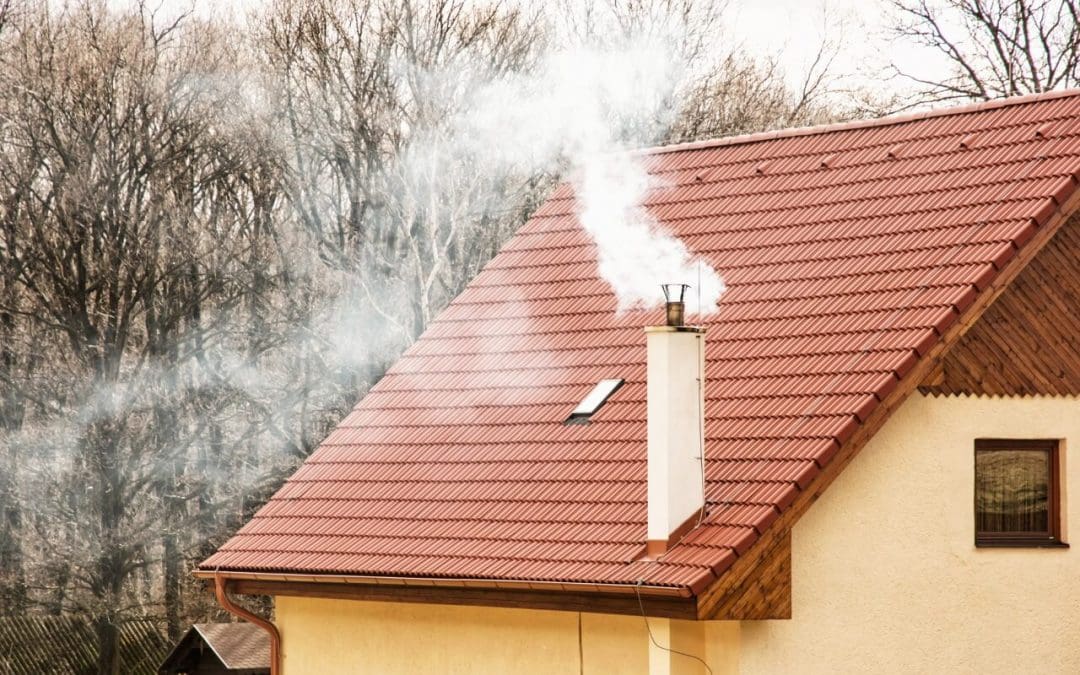A chimney directs smoke and fumes from your fireplace out of your home. As an integral part of your home and fireplace, it’s important to maintain your chimney so it stays in good shape. Here are a few easy ways to prevent chimney fires.
Schedule an Inspection Annually
The chimney should be inspected annually. During the inspection, the professional will look for missing or broken mortar, cracks, damage to the flue liner, and other defects. If the inspection reveals issues with the chimney, it should be repaired before use. Obstructions and soot need to be cleared away at least once every year.
Minimize Creosote Build-Up to Prevent Chimney Fires
Creosote causes a number of chimney fires in the U.S. each year. It is a dark brown substance that accumulates on the inside of the chimney and is highly flammable. Creosote is a byproduct of vapor and smoke condensing when moving from the fireplace to a cooler part of the chimney.
Burning seasoned hardwood helps to minimize creosote build-up. Make sure the wood has dried for more than six months and has a moisture content of less than 20 percent before burning it. A wood moisture meter will help to determine if the firewood is ready to use. Keep your fireplace damper open to encourage sufficient airflow.
The chimney’s flue liner can be insulated by wrapping a heat-resistant blanket around it. The insulation assures the flue temperature is not too cold and helps reduce the amount of condensation and creosote.
Install a Chimney Cap
The chimney cap keeps leaves, pests, and debris out while preventing backdrafts. It also keeps acidic rainwater from entering and corroding the chimney. Choose a galvanized metal cap and hire a professional contractor to install it. Some manufacturers offer warranties on metal caps that may be void unless installed by a professional.
Using Safe Fire Starters to Prevent Chimney Fires
Always use quality fuel when you select the tinder, kindling, and hardwoods. For kindling, use dried branches or twigs. You can also use dryer lint for tinder. Don’t use glossy paper and cardboard to light a fire because they contain chemicals and emit toxic smoke.
Use well-seasoned hardwood in the fireplace and never start a fire using kerosene or gasoline. These liquids are highly combustible and very dangerous. Also, choose wood over coal, as coal increases the risk of a chimney fire.
Use Clean Burning Techniques
Slow-burning fires and low temperatures produce more smoke and leave creosote on the walls of the chimney. Hot, fast-burning fires are preferable since they create less vapor and smoke, and therefore less creosote. Open the damper all the way when you light a fire. This helps the fire burn hotter to prevent chimney fires.
Chimney fires are a common cause of house fires, but you can prevent them by using the tips above. Practice basic fire safety any time you’re around an open flame. Test your smoke detectors monthly and always have a fire extinguisher nearby. Make sure everyone in your home knows how to use it in case a fire occurs.
Oasis Home Inspections provides home inspections to customers in Brevard County, Florida. Contact us to schedule an appointment.
